Many bird owners often contemplate the idea of placing their feathered friends’ cages outdoors, allowing them to enjoy the sights and sounds of the natural world.
In this guide, we will discuss ‘Can I Put My Bird Cage Outside? – Factors to Consider & Tips’. We will explore the various aspects that should be taken into account when deciding whether it’s safe and suitable to put your birdcage outside.
Your bird’s safety, well-being, and overall happiness are paramount, and understanding the potential risks and benefits of outdoor living for your avian companion is crucial.
From exposure to the elements and predators to environmental enrichment and proper supervision, we’ll delve into the factors that can help you make an informed decision about allowing your bird to experience the great outdoors.
Let’s explore the considerations and expert tips for creating a safe and enjoyable outdoor environment for your pet bird.
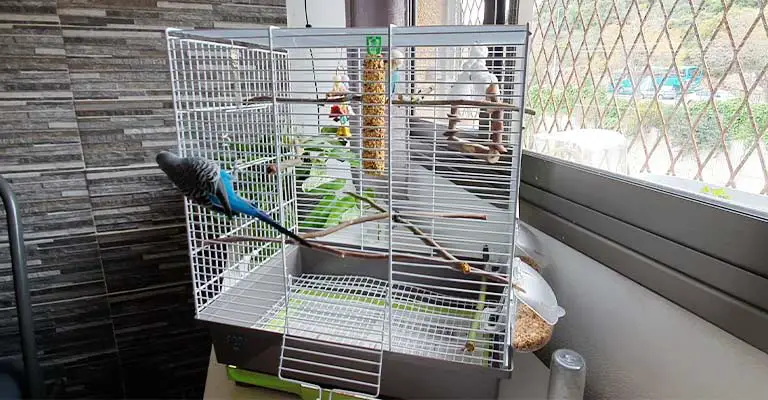
Can I Put My Bird Cage Outside?
One of the most critical factors to think about is your local climate. Birds are highly sensitive to temperature and weather conditions. Before moving your bird outside, consider the following.
Ensure that your bird’s outdoor environment is within a temperature range suitable for your bird’s species.
Some birds, like canaries and budgerigars, can tolerate a wider range of temperatures, while others, such as African Greys or Lovebirds, are more sensitive to temperature fluctuations.
Be prepared for seasonal variations. Birds might need different care during the hot summer months compared to cold winter periods. Ensure that your bird is comfortable year-round.
Predator Protection
Predators are a significant threat to outdoor birds. Your bird’s safety is paramount, and it’s vital to take measures to protect them from potential threats. Raptors, like hawks and owls, can pose a danger to outdoor birds.
Consider placing your bird’s cage in an area with a roof or mesh cover to prevent aerial attacks. Creatures like raccoons, cats, and snakes can be a menace to your bird. Ensure that your bird’s cage is elevated and secure from ground-based threats.
Supervision and Interaction
Supervision is crucial when your bird is outside. Even with the best protection, accidents can happen. Your bird should never be left outside unattended.
This is especially important if you have a larger bird that could be targeted by predators. Spending time with your bird outdoors can be an enriching experience for both of you. Birds enjoy fresh air, sunlight, and new sights and sounds.
Environmental Enrichment
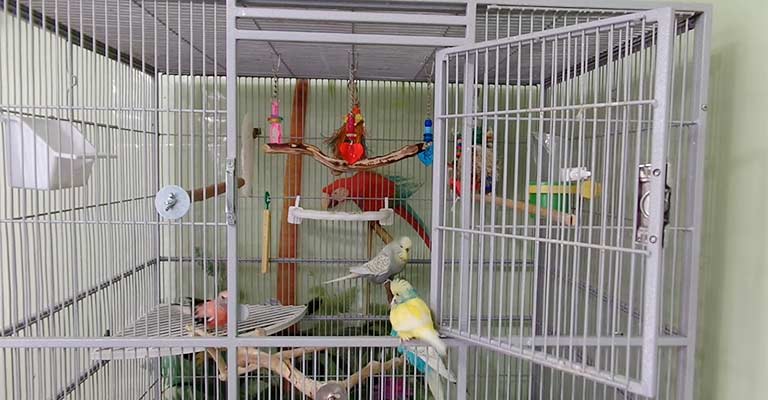
Outdoor living offers a variety of sensory stimuli that can benefit your bird’s mental and emotional well-being. Birds often enjoy the sounds of other birds and the rustling of leaves.
Positioning the cage in a location where your bird can hear these natural sounds can be enriching. Exposure to natural sunlight can provide essential vitamin D for your bird, which is crucial for their health.
Ensure that there is a shaded area in the cage where your bird can retreat from direct sunlight to avoid overheating.
Cage Setup and Comfort
Creating a comfortable and stimulating outdoor environment is vital for your bird’s well-being. Pay attention to the following factors. Ensure that your bird has enough space in their outdoor cage.
They should be able to move around, stretch their wings, and have space for toys and perches. Provide a variety of perches and toys to keep your bird mentally engaged. Natural branches and bird-safe toys are great choices.
Acclimatization Process
If your bird has never experienced the outdoors before, it’s essential to introduce them gradually. Begin with short, supervised outdoor sessions. Place the cage in a quiet and secure area to minimize stress.
Watch for signs of stress or discomfort in your bird. If they appear anxious or agitated, it may be too early for outdoor exposure.
Regular Health Checkups
Regular veterinary checkups are crucial for your bird’s well-being. Outdoor living may expose them to different health risks, so it’s essential to stay vigilant.
Ensure that your bird is protected against common outdoor parasites like mites. Some areas may have specific avian health concerns. Consult your veterinarian for any necessary vaccinations.
Legal and Ethical Considerations
Finally, research and adhere to local regulations regarding keeping birds outdoors. Some regions may have restrictions on bird-keeping or outdoor enclosures, and it’s vital to comply with these laws.
Do Parrots Like Being Outside?
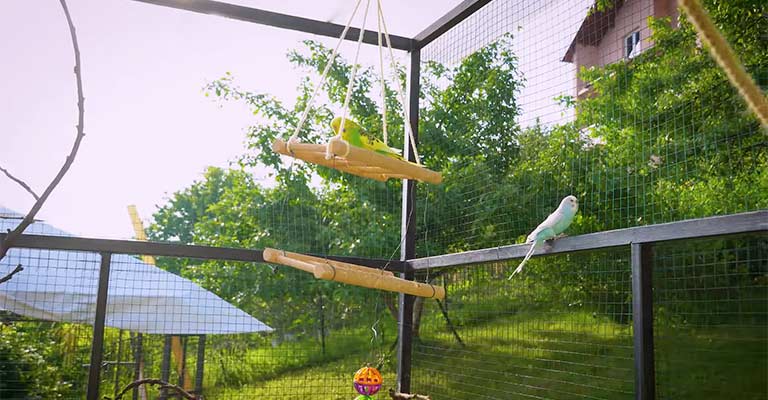
Parrots are intelligent, social, and inquisitive birds, and many of them enjoy spending time outdoors. While not all parrots have the same preferences, taking your parrot outside can provide them with various benefits.
However, there are essential considerations and precautions to keep in mind to ensure their safety and well-being.
Why Parrots Enjoy Being Outside
Parrots are highly intelligent and curious birds. When outdoors, they encounter a wealth of new sights, sounds, and smells that provide mental and sensory stimulation.
This novelty can help prevent boredom and behavioral issues often seen in indoor birds.
Sunlight and Vitamin D
Exposure to natural sunlight is essential for parrots. Sunlight helps them synthesize vitamin D, which is crucial for their bone health. Spending time outdoors allows them to benefit from these natural rays.
Physical Exercise
Outdoor environments offer more space for your parrot to move around, stretch their wings, and engage in natural behaviors like climbing, foraging, and flying. This extra exercise is vital for their physical well-being.
The fresh outdoor air provides a break from the potentially stale indoor air. The change can help improve respiratory health and overall comfort for your bird.
Social Interaction
Parrots are social creatures, and being outside with you can enhance their sense of connection and social bonding. You become part of their flock, and they can enjoy your company and the outdoor experience together.
The outdoors is a treasure trove of foraging opportunities. Your parrot can explore the ground for fallen leaves, branches, and natural materials, providing a chance for natural foraging behaviors.
Precautions and Considerations
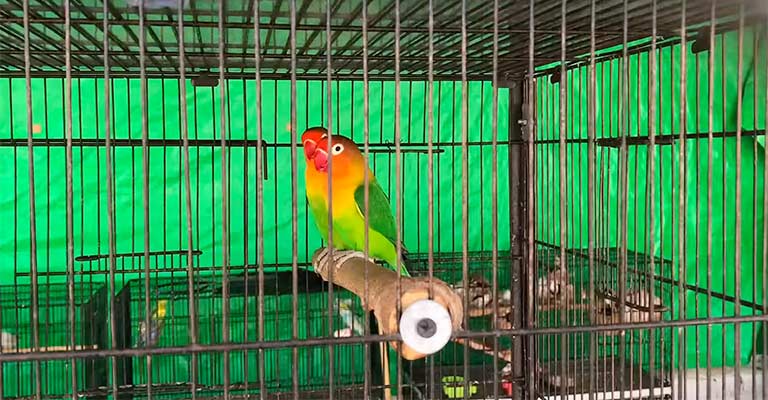
While outdoor time can be enriching for your parrot, it’s essential to consider various factors and take precautions to ensure their safety and well-being.
Predator Protection h4
Birds of prey, such as hawks and owls, pose a significant threat to outdoor parrots. Ensure that your bird’s outdoor enclosure provides protection from aerial predators. Use a mesh or wire roof and walls to keep them safe.
Supervision
Never leave your parrot outside unattended. Even in a secure enclosure, accidents can happen. Supervision is key to ensuring their safety.
Parrots are intelligent and can be skilled escape artists. Make sure your outdoor enclosure is escape-proof and secure, with no gaps or openings that they can slip through.
Weather Considerations
Be mindful of the weather. Extreme temperatures, strong winds, and rain can be uncomfortable or even dangerous for your parrot. Provide a shaded area in the outdoor enclosure for protection from direct sunlight, as well as a way for your bird to retreat from the elements.
Ensure that the outdoor enclosure and any items within it are made of safe, non-toxic materials. Parrots often explore their surroundings with their beaks, and you want to avoid any ingestion of harmful substances.
Toxic Plants
If you have plants in your outdoor area, make sure they are non-toxic to parrots. Some common garden plants can be harmful if ingested. Research the plants in your yard and remove any that are toxic.
Regularly clean the outdoor enclosure to prevent the buildup of feces and food particles. A clean environment is essential for your parrot’s health.
How to Provide a Positive Outdoor Experience?
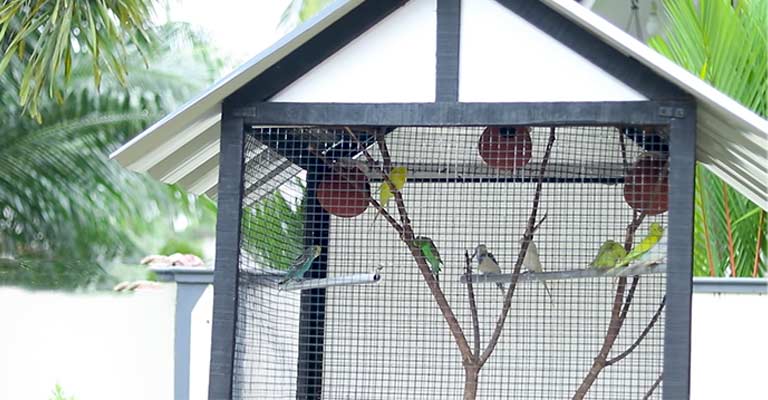
Here are some tips for ensuring a positive outdoor experience for your parrot:
Gradual Introduction
If your parrot has never been outside before, introduce them to the outdoor environment gradually. Start with short, supervised outings to help them acclimate to the new surroundings.
Provide your parrot with comfortable perches and familiar toys in the outdoor enclosure. Having a sense of security can make the outdoor experience more enjoyable for them.
Fresh Water
ensure your parrot has access to fresh water while outside. Hydration is essential, especially on hot days. Change the toys and enrichment activities in the outdoor enclosure regularly to keep your parrot engaged and mentally stimulated.
Positive Reinforcement
Use positive reinforcement to reward your parrot for good behavior during outdoor outings. This can help build a positive association with outdoor time.
Pay attention to your parrot’s body language and vocalizations. If they appear anxious or uncomfortable, it’s essential to respect their limits and bring them back inside.
FAQs
Can I put my birdcage outside?
Yes, you can place your bird cage outside, but it’s essential to consider various factors to ensure the safety and well-being of your bird.
What factors should I consider before putting my birdcage outside?
Before moving your bird cage outdoors, consider the weather conditions, temperature, and potential environmental hazards. Birds are sensitive to temperature extremes, drafts, and sudden weather changes.
What temperature range is suitable for keeping birds outside?
Birds are most comfortable in temperatures between 65°F and 80°F (18°C to 27°C). Extreme heat or cold can be stressful or harmful to birds, so avoid placing the cage in direct sunlight or in areas with strong winds.
How can I protect my bird from predators when the cage is outside?
Outdoor environments may expose your bird to potential predators, such as cats, birds of prey, or other wildlife. Ensure the cage is securely constructed and consider using a cover or mesh to protect your bird from potential threats.
Are there specific tips for acclimating my bird to the outdoor environment?
Gradual acclimation is crucial. Start by placing the cage outside for short periods, gradually increasing the time as your bird becomes accustomed to the outdoor environment.
Conclusion
The decision to place your bird cage outside is a significant one that requires careful consideration of various factors.
By taking into account factors such as climate, predator protection, supervision, and enrichment, you can create a safe and enjoyable outdoor environment for your feathered friend.
Remember that not all birds are the same, and some may adapt better to outdoor living than others. It’s essential to monitor your bird’s behavior and well-being closely when introducing them to the outdoors and make adjustments as needed.
By following the tips and guidance provided in this article, you can make an informed choice that benefits both you and your beloved pet bird.
Whether you choose to bring your bird outdoors for short periods or create a more permanent outdoor habitat, you can provide them with a taste of nature while ensuring their safety and happiness.